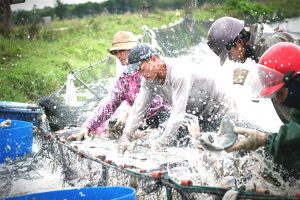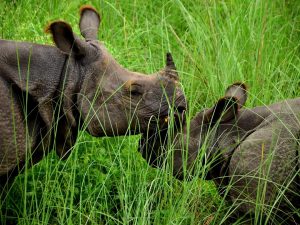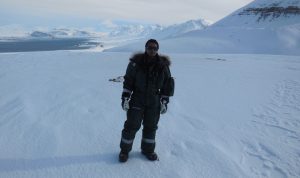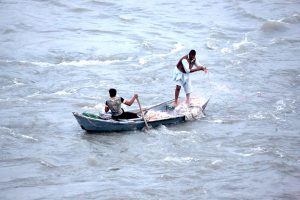Daulat Khan was among the 20 strong men who braved the blizzard and made a five-hour trek to reach neighbouring Shershal from their town of Madashil, in Karimabad. An avalanche had hit Shershal, a remote village in the mountains of Chitral district of the Hindukush Himalayas region in Pakistan, bordering Afghanistan. It had smashed apart three homes, and claimed nine lives.
“We were wet to the bone when we reached Shershal,” said Khan, speaking to thethirdpole.net from his village, in Khyber Pakhtunkhwa province, saying the journey had sapped much of their energy. “We helped the villagers remove four people trapped alive under the snow.” By the time they returned home, it was late at night.
Masood ul Mulk, who heads the Sarhad Rural Support Programme, a development organisation that works in Khyber Pakhthunkhwa and the Federally Administered Tribal Areas, and is a native of the area, described Shershal to thethirdpole.net.
“It is an isolated village perched high up in the mountains, situated in the equally remote valley of Karimabad. Even for the most efficient government to reach there would not be an easy task in the weather being encountered, and with the poor infrastructure these places have. The village is almost up a 90 degree slope. I remember looking at it from across the valley in the nineties and wondering how kids could play there without slipping down the slopes. These valleys are overpopulated now. Houses have sprung up where no one dared to go in the past.” Inevitably heavy snowfall and avalanches will claim lives.
![Poor infrastructure makes travel - and rescue operations - difficult in Chitral [image by Ground Report]](/wp-content/uploads/2017/02/Chitral.jpg)
Several avalanches hit the upper region of Chitral, but it was Shershal village that was the worst off. Mehrban Ali Pannah, who belongs to the village, said he would never forget the loud rumble that could be heard even over the heavy downpour on February 5. “It must have been around 1:30 a.m. and it was very dark. I didn’t see the snow hurtling down, but the sound was so loud, my first thought was that there was an earthquake,” he told thethirdpole.net.
Of the 75 houses in Shershal, 22 had already been severely damaged by landslides over the last few years and the affected residents had been living with their neighbours. Now, apart from the three homes that have been completely buried, another dozen are unfit to live in. This means more crowding for some time.
“The tradition in our part of the world is that during emergencies like these we feed these families by asking every home to pitch in,” said Khan, ascribing the tribulation to God’s will.
Around the same time a series of avalanches hit villages in neighbouring Nuristan and Badakshan provinces, in Afghanistan. More than a hundred are feared dead, with entire villages destroyed. At the end of January, avalanches in the Indian state of Jammu & Kashmir had claimed a score of casualties, including ten soldiers.
Back in Chitral, heavy rainfall and landslides have stalled rescue work. “Under normal circumstances, it takes about three hours from the main town [which is 40 kilometres away] to reach the affected village and that too in a 4×4 jeep; right now that is impossible as there are several road blocks,” said Khan. It was much easier for the locals to reach as they knew the area well and could go on foot, he added. Army helicopters reached the marooned villagers with supplies – tents, fuel wood, medicines, warm clothes and blankets – after 24 hours.
Such disasters have become frequent
Events such as these that were once rare have now become frequent. Ghulam Rasul, the director general of the Pakistan Meteorological Department, is cautious about linking the phenomenon to climate change. He said the region had not experienced such heavy snowfall in the last 20 years. “And it fell over a very short span,” he added.
“I have never experienced such heavy snowfall since I was a child,” said Hamid Mir, a local who has been studying glacial lake outburst floods (GLOFs) in the region for several years and knows the topography and the weather conditions. “In the last three days, we received snowfall measuring over two feet in Chitral town and over six feet in the valleys higher up.”
Mir said Chitral, due to its sensitive geo-climatic conditions and fragile ecosystem, was highly vulnerable to different types of disasters including GLOFs, avalanches, landslide/rock slides, riverine floods, flash floods and earthquakes (it is located on a fault line).
In addition, the snowfall trend has also shifted, said Rasul. “Summer months have increased and it’s taking longer for winter to arrive.” The shorter winter means there is limited time for the snow to crystallise into ice, said Mir. This increases the chances of avalanches sliding down the steep slopes since the ice has not solidified into a strong barrier to hold the snow.
“Even when it rained, it seemed like the kind of downpour we witness in summer. It was heavy and lasted for several days,” Rasul said, pointing out another anomaly.
There are several causes that can trigger a snow slide, including heavy snowfall and even seismic activity measuring as low as 2 on the Richter scale. In addition, Rasul said, “Avalanches can be triggered when the natural landscape is disturbed.”
This was endorsed by Mir. He said the pastures higher up in the valley were under tremendous pressure due to increased number of livestock. “The degraded forests and pastures also trigger avalanches, GLOFs, flash floods, and landslides.”
Disaster preparedness
What’s even more unfortunate, the conventional knowledge that the indigenous communities relied upon now seems passé with the changes that have taken place. “This is new territory for them and they are ill-equipped,” said Mir, “We need to make people aware of the changes in the weather pattern and help them adapt to it.”
The early warning systems (EWS) built by the Meteorological Department in the valleys of Golain and Bindogol are quite successful, said Mir, and while these were meant for predicting landslides and flash floods, they could provide data to predict different events including avalanches.
The EWS include automated rain gauges, snow measuring equipment, water discharge measuring, glacier and lake monitoring systems, weather stations and camera traps. “The entire system provides real time data to the PMD. The combined data from this equipment, after analysis, is used to issue warnings,” said Mir, who is a former manager of the GLOF Project set up by UNDP which provided the equipment. “All of this is connected via satellite,” he said.
Environmental engineer Shahid Lutfi said that while it might be difficult to forecast avalanches, they could develop a geographic information system (GIS) model with layers mapping the history of such incidents and past snowfall data at areas which trigger the avalanches. “With real time monitoring of snowfall coupled with weather predictions, the possibility of an avalanche may be assessed.” But he warned that the exercise would be very expensive, not only requiring funds but a very experienced and dedicated human resource component.
Mulk suggested that “a localised system of disaster management and development needs to be adopted which builds on local resilience and adaptability” to deal with challenges in such remote areas. Rasul agreed, and added, “We disseminate warnings in a conventional way, to places of worship. Because the communities are so integrated, word gets around quickly and people start preparing for the eventuality.”
![<p>[:en]An avalanche, such as this one on Annapurna in Nepal, can be set off by a tremor as low as 2 on the Richter scale [image by Maureen Barlin][:ne]An avalanche, such as this one on Annapurna in Nepal, can be set off by a tremor as low as 2 on the Richter scale [image by Maureen Barlin][:hi]An avalanche, such as this one on Annapurna in Nepal, can be set off by a tremor as low as 2 on the Richter scale [image by Maureen Barlin][:bn]An avalanche, such as this one on Annapurna in Nepal, can be set off by a tremor as low as 2 on the Richter scale [image by Maureen Barlin][:ur] ریکٹر سکیل پر دو اعشاریہ صفر جتنی معمولی ارضیاتی حرکت بھی، نیپال کے انناپورنا پر موجود اس برفانی تودے کا محرک بن سکتی ہے- [ تصویر مورین برلن ][:]</p>](https://dialogue.earth/content/uploads/2017/02/Avalanche.jpg)







![Dal Lake, Half of Kashmi's wetlands have disappeared in the last century [mage by Athar Parvaiz]](https://dialogue.earth/content/uploads/2015/10/10-300x225.jpg)
